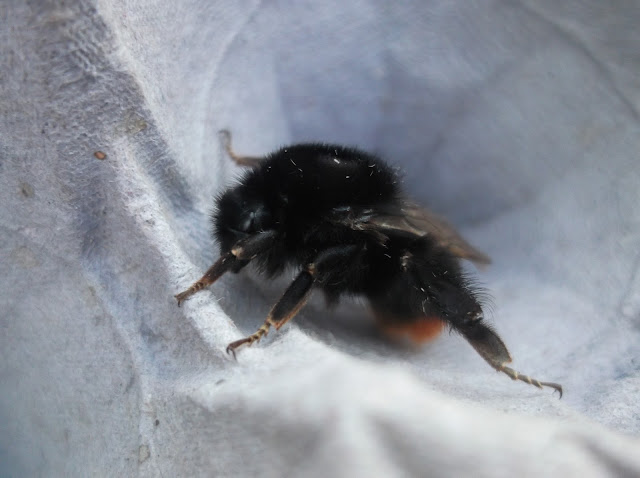Anyway this weekend's wildlife....
Our first evening walk produced great excitement, and photo opportunity, when we chanced upon a small muddy puddle where House Martins were collecting nesting materials, in the form of mud! So confiding and not bothered by our presence - we watched from a very short distance away, keeping very still.
Not usually observed on the ground. Completely white underside, blue sheen-black back and head, feathery legs. White rump seen in flight.
A Barn Swallow joined in too...
Blue-sheen dark back and head, red throat edged with blue and a cream underside.
Along the wooded edge footpath towards and through some dunes, to one side beach other side farm fields, we heard Bullfinches. A very shy bird but we've often heard them in this area. Finally we caught sight of them, trying to hide in bushes, but then the male appeared on the telegraph lines and after this the female was spotted on the ground ahead of us, feeding.
The male has a gorgeous bright pink breast, black head, grey back, black wings with pale wing bar, and black tail .
The female is almost the same - just a beige-brown breast .
On a morning walk near some marshes, resting on a bramble bush, we found a Large Red Damselfly...
 The difference between Damselflies and Dragonflies is that Damselflies rest with their wings closed, like this photo, whereas Dragonflies tend to keep their wings open - splayed out.
The difference between Damselflies and Dragonflies is that Damselflies rest with their wings closed, like this photo, whereas Dragonflies tend to keep their wings open - splayed out.
There were several butterflies on the wing too, although very flighty and wouldn't always keep still for a photo. However I did capture this image of a Green-veined White...
A species of White butterfly with obvious green coloured 'veins' on the underside of the wings.
And before we left I followed a female Orange-tip butterfly trying to get a photo of it in gusty wind and only managed this....
See how this one has 'blotches' on the underside of the wings as opposed to the 'veins' on the Green-veined white above. And of course the male of this species has orange tips to the wings.
Thanks for reading! I hope this inspires you to get outside and look at the wildlife around you!
























































